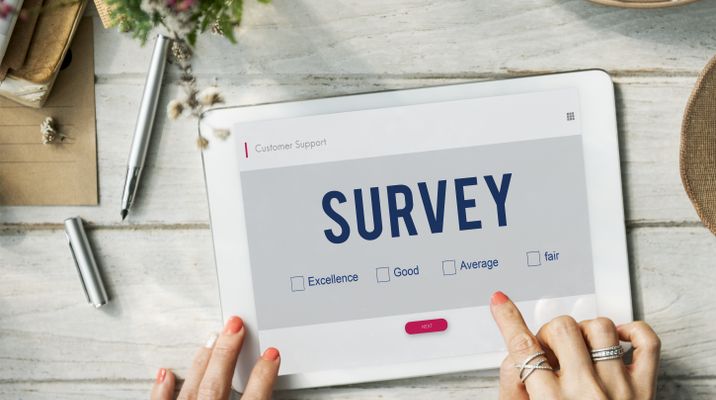How to Say No to Customers Positively
Sudeepa Bose
Saying “No” to customers is one of the most challenging conversations for any business. No one likes rejection – not the customers, at least. Support reps may find themselves in a fix when they have to say no to customers. They are worried that they may jeopardize the relationship built with the customers by saying “no”.
We have all heard of many aphorisms that demand organizations to go the extra mile to deliver exceptional customer service. For example, “Customers can make or break a company”, the customer is king”, “customers are always right”, and many more.
As per the Harvard Business Review, customer experience is the key to a successful business. Organizations do anything in their power to fulfill every expectation of customers.
But what happens when you receive an out-of-scope request from a customer that is just not possible? Fulfilling such requests might end up costing you more in the long run.
So, how do you politely decline a customer’s request? And, what If the customer is adamant?
If you’re wondering the best way to say no to a customer positively and without causing a stir, then you are on the right page. This article is all about tips and tricks to politely say “no” to customers who expect nothing less than a “yes” and still keep them engaged with the business.
But for starters, let’s find out when to say “no” to customers!

When to Say “No” to Customers?
Every customer request that comes up does not mean you need to fulfill it under all conditions. Customer support reps should have a guide drafted by the organization that determines the situations they need to say no to a customer.
Listed below are scenarios when you can say no to customers:
- Against the company policy – It’s perfectly okay not to cede to a customer request against the company policy.
- Personal details – Giving out personal information about either existing customers or agents is something you can refuse to the customer even if it irks them.
- Being threatened – Many times, customers verbally abuse the customer service reps or threaten them with dire consequences. Still, you need never give in to their unethical or out-of-scope demands.
- Preferences – Be ready for situations where customers may ask for some specific preferences that may be against the standard norms followed at your company. Feel free to say no to them in such instances.
- Foul language – Don’t ever hesitate to say no to customers immediately when they use foul language to get things done.
Surefire Tips on How to Say “No” to Customers!
Be Honest
Angry customers usually demand an explanation for why their requests can’t be fulfilled. If you fail to give clear reasoning, they might assume that you don’t care to help them solve a particular problem or provide the solution they demand.
It will be an easier pill for the customer to swallow if you can provide a clear reason with all honesty behind your ‘no’. Although it might be tempting to give false information, such as you’ll pass the information forward just to avoid the situation, this may backfire. You might find yourself at the receiving end of the customer’s anger and disappointment. Honesty prevents you from wasting anyone’s time.
Here are some examples to start your explanation:
- “Please allow me to explain why we can’t do this right now….”
- “The reason we’re unable to fulfill this request is that….”
- “We value your important feedback. But, unfortunately, we can’t add this feature or service at this time because….”
Empathize
Although you may not be able to offer them their desired resolution, you want to be sure your customer feels heard and understood. Follow the policy of empathy to de-escalate the anger of customers.
Do not let the ‘no’ sound dismissive and off-putting to customers. Empathize and show that you care. And remember to keep your language positive. Know how to apologize like you mean it and avoid giving bot or canned responses.
Mirror the tone of customers to look genuinely empathetic and always try to give customers the space to pour their hearts out without feeling unwanted.
That said, customers aren’t fools. They can smell insincerity a mile away. Be genuinely concerned and put yourself in their shoes and respond.
Listed below are some phrases you can use to make your customer feel heard and understood:
- “That really sounds like a great feature to have.”
- “I do understand why you’d want that service/feature added.”
- “We love hearing new ideas from our valued customers.”
- “Adding this feature would be great for solving [problem]”.
Respond Gracefully
Customers always want the best customer experience with brands and expect businesses to respond positively. So, even if it is a no to a request, be careful with the choice of words to avoid any damage to customer goodwill with your business. Wherever possible, try to say “no” by wrapping it in positive words.
Maintain politeness when dealing with customers so that no bad vibe is passed down. First, hear customers thoroughly, see through their problems, and respond to them. Focus on the tone you choose to respond to and avoid an outright denial outright. Instead, be diplomatic in terms of interacting with them.
Listed below are some ways to tell a customer no by framing the response gracefully:
- “Thanks to you for bringing this issue to our attention. Let us see what the best that we can do for this situation is.”
- “We appreciate your valuable time and effort to share this with us. Unfortunately, we cannot implement this right way, but you can still be hopeful for the future….”
- “The primary reason we’re not able to offer this is that….”
Offer Alternative Solutions
If a customer comes in requesting a product or service that isn’t available, wrap your ‘No’ wisely with other alternatives. The satisfaction level of the customer will be much higher if the support agent becomes an ally, offering an alternative solution.
Inform the customers how they might get the same experience with something else you have available instead.
Offering an alternative will make customers feel valued. Giving them a different solution or choice rather than rejecting them can make them return to you again.
70% of unhappy customers return if businesses are able to solve their problem, even if it is with alternative solutions,
Do more than just saying “No” or “Sorry, we can’t help you”. Instead, point your customers toward a product or solution that better suits their needs—even if it means directing them to a competitor.
For example, imagine you’re an agent working for an airline, helping a customer who missed a flight and requested a refund. Although the request isn’t covered by company policy, you’ll have to say no; you can frame it. Hence, the customer understands that you’re trying to help them despite declining the request.
You can say something like:
“I’m so sorry your personal emergency caused you to miss your flight. We can’t refund you for the flight you missed, but let’s see if we can rebook you on a different flight.” This starts with expressing empathy and ends with a promise of help, softening the news the customer won’t like.
Take Follow-ups
After saying no to a customer and offering the next best alternative:
- Make the best use of this situation.
- Delight your customers with proper follow-ups.
- Show them you care.
Do not wait to hear back from customers. Instead, be proactive and take the first step in reaching out to them.
A follow-up will help you recognize the customer signals and give you a roadmap to create business value. Timely follow-ups will help you better understand what your customers want but can use the input to improve your customer support process.
Following up with customers to check that their problem was solved, even if you cannot help them yourself, shows that you’re genuinely interested in the customer’s issue. This can re-spark the conversation if they haven’t found a viable alternative.
An example of a good follow-up message you could send:
“Hi [Customer Name],
The last time we spoke, you were looking for [feature or service] to help you solve [challenge]. I just wanted to follow up to see if you were able to find the solution you were looking for. I recommended looking into [alternative/workaround].
Let me know if this worked well for you!”
Send a follow-up message through the channel the customer initially contacted you, whether through a phone call, email, or social media. That’s a pillar of omnichannel and social media customer service.
Seek Feedback via Customer Surveys

A customer survey to obtain customer feedback is an essential tool that should matter to your business the most. It helps you handle customer complaints and deliver better customer service. If you want to create happy customers, seeking feedback is a must.
If you are dealing with saying no to customers, customer feedback will help to avoid such situations in the future.
Keep a Log of Your Conversations
Conversations may get complicated if you have no idea of the previous conversations initiated by other reps. Maintaining customer conversation logs can give you something to refer back to. Plus, asking customers to repeat themselves over and over is tiresome.
Logging customer conversations can also give you a clear picture of the requests or concerns each customer has brought up in the past. You can also check what worked well and what didn’t, so you can start telling customers no more elegantly.
Conclusion
To sum it up, it’s all about how you say no to customers.
A negative message like no can look easy if wrapped in positive words. They may feel appreciated while experiencing rejection if you reject them probably.
With these aforementioned tips and the right approach, you can let the customer down gently. You can make your “no” more palatable for the customer – and easier on customer service reps.
If you wish to engage customers more effectively, using the engagement tools is often the best step forward. Sign up with Juphy to empower your business with top engagement tools and deliver value.
Related Article – Why Do Customers Leave Your Business?

Understanding why customers leave your business is the key to avoiding it and enhancing your business’ customer relations. Read more.
